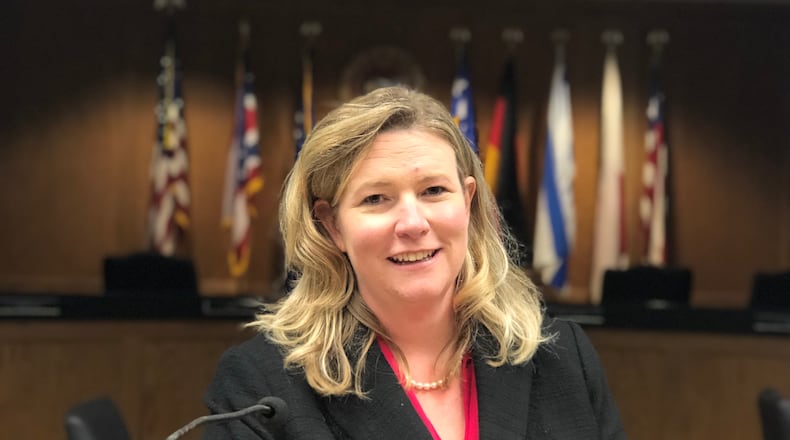At one time, Dayton was a focal point of ingenuity and industry in the heartland, and just a few decades ago, the city was an “epitome American of wealth and prosperity,” Alec MacGillis, senior report for ProPublica, says in the show.
OUR INVESTIGATION: How do we get the economy to boom for all?
But the city has fallen behind more prosperous parts of the country, the episode’s narrator states. The city lost nearly half its population, opportunities shriveled, jobs disappeared or were replaced by lower-paying positions and drug addiction and poverty spiraled into crises , the show says.
Dayton Mayor Nan Whaley, who was interviewed by Frontline, says the show was “truthful,” but that doesn’t mean it was fair.
She said there were some major omissions and should have told more stories about the many good things happening in the city.
“Dayton is so much more than doom and gloom,” she said. “We feel the recent national press attention has missed the more interesting story: How our community has responded to these challenges with creativity and determination.”
MORE: Downtown residents feel really good about Dayton. Others are less enthused.
The opening of the Levitt Pavilion Dayton this summer has brought a popular new attraction to the urban core, she said.
Hundreds of new apartments have been built in the northeast part of downtown, and the region continues to add jobs, year-over-year.
Daytonians are contributing to the tech economy and Dayton has the fourth highest concentration of engineers, scientists and Ph.D.s in the nation among cities of its size, Whaley said.
Dozens of organizations are helping people recover from addiction and have partnered together to combat the opioid crisis, she said.
Young and old people are moving into revitalized downtown neighborhoods, and the city has the largest share of homebuyers under 35, she said.
“… more people are recognizing they can have a great quality of life in Dayton with a reasonable cost of living,” she said.
On social media, some local residents reacted negatively to the “Left Behind America” documentary, which they claim willfully overlooked the progress Dayton has made to reinvent itself.
A few Facebook users accused it of being a “hit piece,” “poverty porn” and “irresponsible.”
Others, however, felt it painted an accurate and moving picture of how hard many people’s lives are in Dayton. Some people said it powerfully highlighted the numerous and formidable challenges facing the community.
One person in an online posting said the documentary explained how systemic racism “divided and ruined” the city.
Some responses applauded Frontline for highlighting Dayton’s struggling economic conditions, including a 34 percent poverty rate, while also drawing attention to successes, like the transformation into a more welcoming place for immigrants.
TRENDING: What you thought about Frontline portraying Dayton as city left behind
The show features archival footage of Dayton in its heyday, with busy factory floors, crammed downtown streets and bustling stores and markets, most of which have since closed.
Many of the modern-day video clips showed empty downtown corridors, vacant and decaying homes and boarded-up businesses.
The visuals were “not very fair” because they showed completely empty downtown streets and looked like they were recorded during very quiet times, perhaps early in the morning, Mayor Whaley said.
MORE FROM THE PATH FORWARD: DAYTON DAILY NEWS INVESTIGATES
The visuals were selected to set up the story they wanted to tell, Whaley said.
“The story was short on the work people are doing in the community and then acted like we have no control over our destiny, which I disagree with,” the mayor said Wednesday.
The episode did not contain video of the new housing, offices and commercial buildings that have come downtown or that are under construction, critics say. Critics said the show focused entirely on Dayton’s troubles and ended before discussing its progress.
MORE: Dayton voters to decide whether to end penalties for marijuana violations
About the Author

